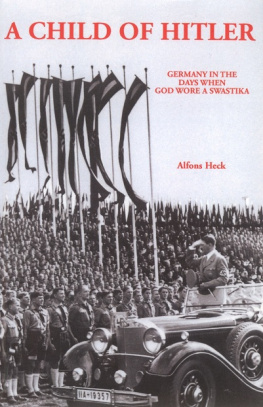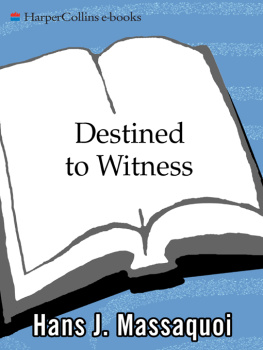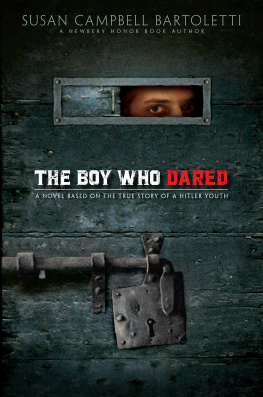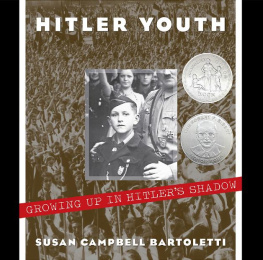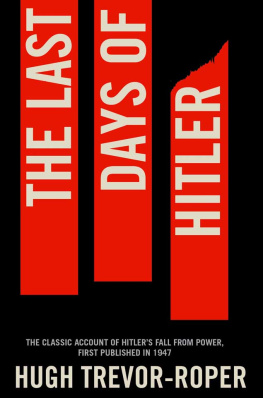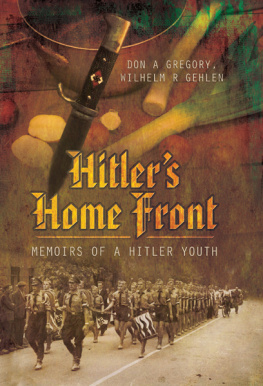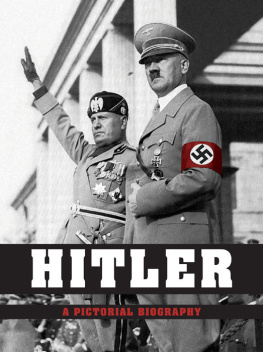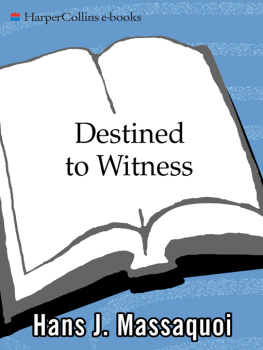
A CHILD of HITLER
GERMANY IN THE DAYS WHEN GOD WORE A SWASTIKA
Alfons Heck
Digital Edition ISBN 978-0-939650-82-8
Digital Edition Copyright 2011 by Alfons Heck. All rights reserved. This book, or any portion thereof, may not be reproduced in any form, except for review purposes, without the written permission of the publisher.
Published by:
American Traveler Press
5738 North Central Avenue
Phoenix, AZ 85012-1316
800-521-9221
Ebook created by Brad Farmer | Many Hats Media
For my wife, June
The events in this account happened more than 40 years ago. I was a teenager at the time, and what few notes I had made were destroyed in the air raids. Therefore, I have used my imagination to recreate conversations and to dramatize scenes. While I cannot vouch for the accuracy of every name and date, what I am sure of is that this is how I experienced Nazi Germany. In that sense, it is fully my autobiography.
-Alfons Heck
Alfons Heck...
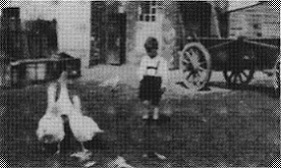
...at Heck farm.
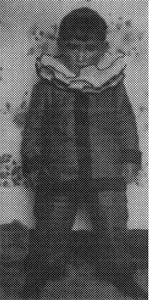
...in Kameval costume.
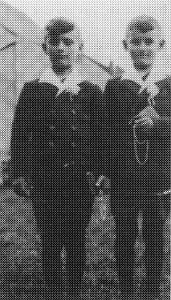
...with brother Rudolf at First Communion.
It was a disheartening experience to watch Hitler take over the youth of Germany, poison their minds, and prepare them for the sinister ends he had in store for them. I had not believed it possible until I saw it with my own eyes.
William L. Shirer
The Nightmare Years
FOREWORD
In just 12 years, 1933 to 1945, Adolf Hitler came, saw, was seen, conquered and was eradicated. The results of that reign still linger overpoweringly-on the political map of the world, and in individual human cost. Alfons Heck says it, in the final words of this book: "Tragically, now, we are the other part of the Holocaust, the generation burdened with the enormity of Auschwitz. That is our life sentence, for we became the enthusiastic victims of our Fhrer."
All of Hitler's victims were blameless, including the enthusiastic children who wore his colors and swastika, and swore a solemn oath of fealty to evil. Children become part of the society to which they belong, and if that society is forced into evil, then who shall be held to blame? Alfons Heck writes of an exciting, colorful, stirring childhood. He remembers, accurately, being part of a Germany renascent, powerful, something to be dealt with. The fascination in Heck's marvelous story is the fascination with evil, with the satanic Pied Piper who led a generation to pain and suffering.
Blame the children or the society? Hardly. It would be to blame the rubble for the bombs, the wreckage for the tornado. We are all beasts of burden, and the burden is life; hardly in our power to determine the ingredients of the load.
Heck tells a story that needs to be told, and he needs to make no apologies for what happened. He was there and his report in A Child of Hitler is not an apologia but a crucial look at what was happening to a talented boy growing into manhood within a system he had no way of truly measuring.
Leo Coughlin
Former Foreign Editor
and Editor "Perspective"
Baltimore Sun
It's extraordinary that Alfons Heck survived to write this account, and perhaps equally remarkable that he can tell his story so fully, that is, with complete acknowledgment of his participation in a cause so widely despised. He writes factually but vividly; often the horror lies between the lines. Reading A Child of Hitler seems necessary for a full understanding of World War II-and to comprehend the chilling possibilities of a captivated childhood.
Alexander B. Cruden
National and Foreign Editor
Detroit Free Press
I first knew Alfons Heck as a soft, precise voice on a long distance line, a voice that never flagged or rose as we worked over a long story about his experiences that he had written for my weekly newspaper. I met him some time later, when he came to Boston and appeared on a local television talk show. We had a long, easy conversation about Germany and German Texans, about history and reminiscences and family. The voice, it turned out, belonged to someone you would never pick out of a crowd as a former Hitler Youth leader: trim instead of burly, dark instead of blond, reserved and almost courtly.
Even more surprising was his appearance on TV. His soft answers could not turn away the wrath of the callers. Again and again they pressed him to confess his complicity in evil in their abstract terms-to agree with them that because he had been a fanatic, he was guilty of fanaticism's crimes. Quietly, precisely, he returned again and again to the particulars of his own life instead-not defending his fanaticism or denying the horrors, but insisting on the understanding that begins at a human scale. He told the story of one person's Nazism in a human voice.
In this book, he tells his story again. He does not offer a full history of Hitler's war on humanity; he does not begin with the point of view of a historian, or a poet, or any other kind of generalizer. The very ordinariness of his starting point, and of his voice, is part of this book's power. The most profound horror of Nazism was how it taught a generation of Germans not to hear the sound of the human voice, but to listen instead to the bugles and the whirlwind. Alfons Heck once shouted along. It matters that we pay attention to his human voice now.
John Ferguson
Senior Editor
The Boston Phoenix
Map I
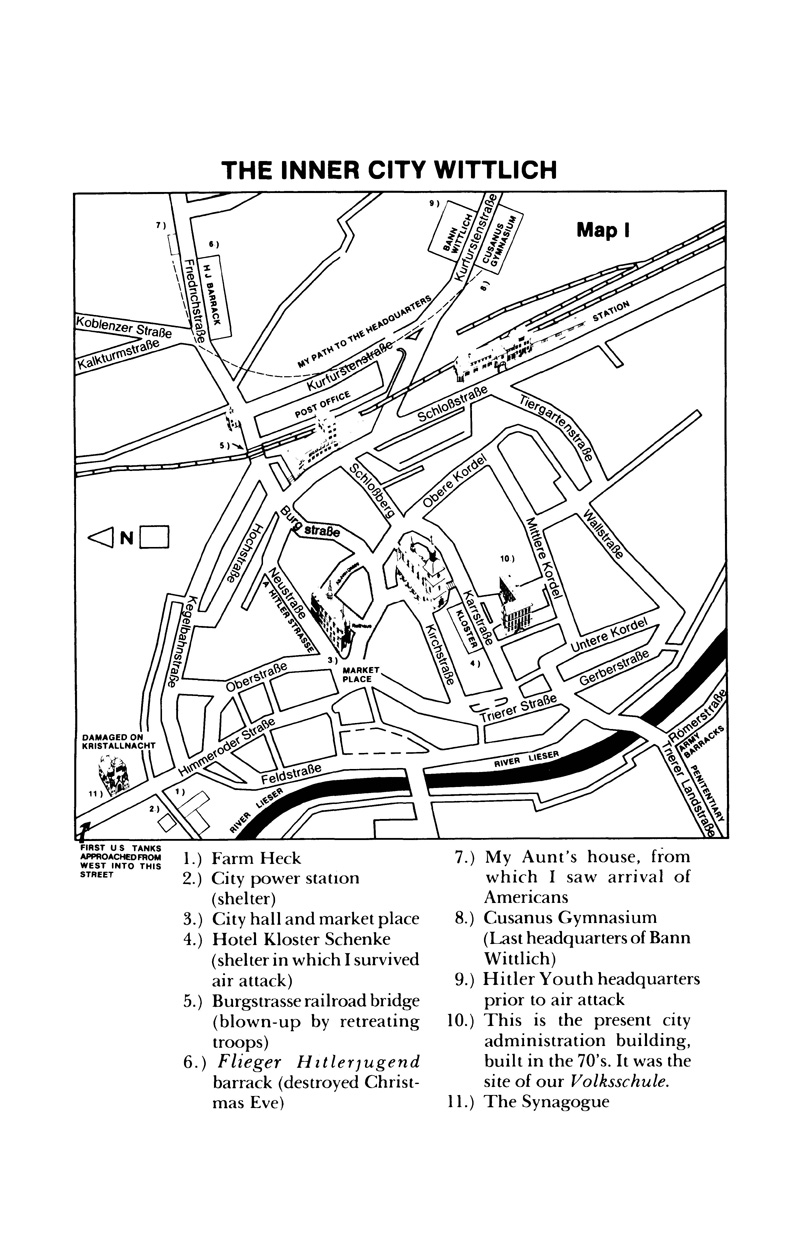
Further map explanation
The #10 indicates the present city offices, which were built long after the war. Earlier, that was the location of our Volksschule. The Cusanus Gymnasium is and was located on the Kurfrstenstrasse. Both the Wehrmacht barracks and the penitentiary, where the French took me, are just off the map. Our farm was shaped like a T: the long rectangle was the house, the other section the stables. The synagogue (#11) was a POW camp after 1940. The present Neustrasse was Adolf Hitler Strasse. The path from #7 to #8 was my way to the Hitler Youth headquarters after the air attack. The original headquarters (#9) were severely damaged and we moved into the basement of the Gymnasium until the end.
Map II
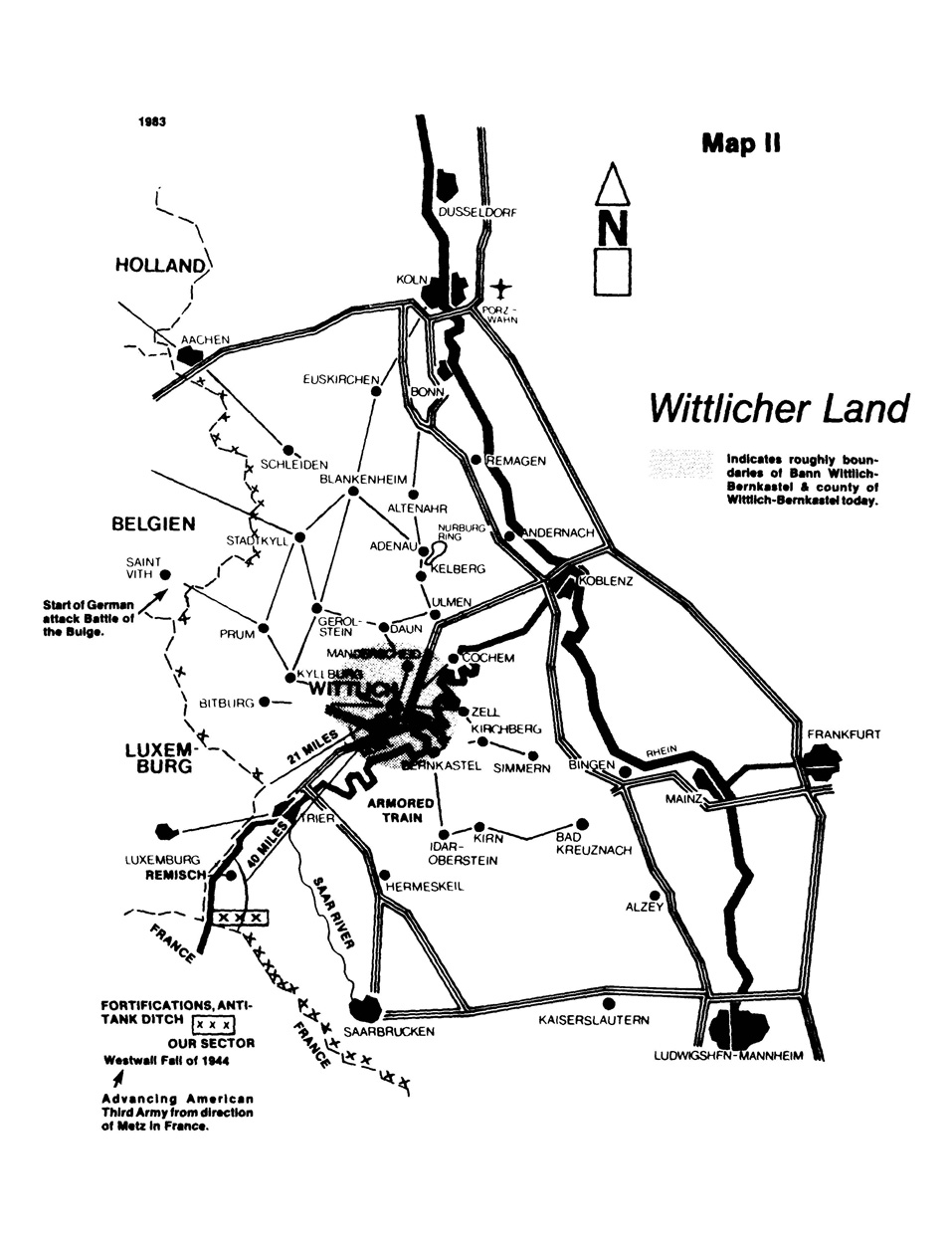
Further map explanation
All of the Autobahnen were built after the war, with the exception of the Cologne-Frankfurt section. Prior to that they were major two lane highways. The most important was the Koblenz-Trier section which ran just south of Wittlich. The xxxxx indicate the fortifications of the Westwall. They were lightest along the Luxembourg border, but very heavy where we were and south of us, since we faced France. The armored train location is my best educated guess. The distance to Bitburg was perhaps 26 miles, due to the winding road through the Eifel mountains. The terrain west to the border is fairly flat, direct distance roughly 21-22 miles, but it can be as much as 30, depending on the route one prefers. Along the winding, beautiful Mosel, it's about 50 miles to the French border, but that was a sightseeing route. Also, the very important rail line from Koblenz to the border, which is not shown, ran roughly parallel to the Autobahn of today. These two arteries were very dangerous, being under constant attack from the summer of 1944 on, but most of the villages were practically untouched by destruction until the very last two months.

